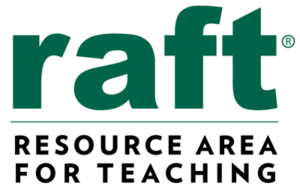Kimoto Life Capsule
Build student curiosity about motion, the center of mass, and inertia with this fun activity! Use this activity as a staring point to discuss the characteristics of “life”.
Standards
Idea Sheets are cross-referenced to subjects listed in the Common Core, Next Generation Science Standards, and California Content Standards.
Develop models to describe that organisms have unique and diverse life cycles but all have in common birth, growth, reproduction, and death.”||Next Generation Science Standards||Grade 3||Life Science||From Molecules to Organisms: Structures and Processes|||Plan and conduct an investigation to provide evidence of the effects of balanced and unbalanced forces on the motion of an object. ||Next Generation Science Standards||Grade 3||Physical Science||Motion and Stability: Forces and Interactions |||Make observations and/or measurements of an object’s motion to provide evidence that a pattern can be used to predict future motion. [Examples: a child swinging in a swing, a ball rolling back and forth in a bowl, and two children on a see-saw.] “||Next Generation Science Standards||Grade 3||Physical Science||Motion and Stability: Forces and Interactions |||Plan and conduct an investigation to compare the effects of different strengths or different directions of pushes and pulls on the motion of an object. ||Next Generation Science Standards||Kindergarten||Physical Science||Motion and Stability: Forces and interactions |||Analyze data to determine if a design solution works as intended to change the speed or direction of an object with a push or a pull.||Next Generation Science Standards||Kindergarten||Physical Science||Motion and Stability: Forces and interactions |||Support an argument that the gravitational force exerted by Earth on objects is directed down.||Next Generation Science Standards||Grade 5||Physical Science||Motion and Stability: Forces and Interactions|||Plan an investigation to provide evidence that the change in an object’s motion depends on the sum of the forces on the object & the mass of the object.||Next Generation Science Standards||Middle School||Physical Science||Motion and Stability: Forces and Interactions
4. Scientific progress is made by asking meaningful questions & conducting careful investigations. As a basis for understanding this concept, and to address the content of the other strands, students will develop questions & perform investigations.||CA Science||Grade Kindergarten||04. Investigation and Experimentation|||4. Scientific progress is made by asking meaningful questions and conducting careful investigations. As a basis for understanding this concept and addressing the content in the other three strands, students should develop their own questions and perform investigations. Students will:||CA Science||Grade 1||04. Investigation and Experimentation|||1.c. The way to change how something is moving is to give it a push or a pull. The size of the change is related to the strength, or the amount of “force,” of the push or pull.||CA Science||Grade 2||01. Physical Sciences||1. The motion of objects can be observed and measured.|||4. Scientific progress is made by asking meaningful questions and conducting careful investigations. As a basis for understanding this concept and addressing the content in the other three strands, students should develop their own questions and perform investigations. Students will:||CA Science||Grade 2||04. Investigation and Experimentation|||5. Scientific progress is made by asking meaningful questions & conducting careful investigations. As a basis for understanding this concept, and to address the content of the other strands, students will develop questions and perform investigations.||CA Science||Grade 3||04. Investigation and Experimentation|||6. Scientific progress is made by asking meaningful questions & conducting careful investigations. As a basis for understanding this concept, and to address the content of the other strands, students will develop questions & perform investigations.||CA Science||Grade 4||04. Investigation and Experimentation|||6. Scientific progress is made by asking meaningful questions and conducting careful investigations. As a basis for understanding this concept and addressing the content in the other three strands, students should develop their own questions and perform investigations. Student will:||CA Science||Grade 5||04. Investigation and Experimentation|||7. Scientific progress is made by asking meaningful questions and conducting careful investigations. As a basis for understanding this concept and addressing the content in the other three strands, students should develop their own questions and perform investigations. Students will: ||CA Science||Grade 6||07. Investigation and Experimentation|||7. Scientific progress is made by asking meaningful questions & conducting careful investigations. As a basis for understanding this concept, and to address the content of the other strands, students will develop questions & perform investigations.||CA Science||Grade 7||07. Investigation and Experimentation|||2. Unbalanced forces cause changes in velocity.||CA Science||Grade 8||01. Physical Sciences||2. Forces|||9. Scientific progress is made by asking meaningful questions & conducting careful investigations. As a basis for understanding this concept, and to address the content of the other strands, students should develop questions & perform investigations.||CA Science||Grade 8||01. Physical Sciences||9. Investigation and Experimentation
- Life Science
- Physical Science
- Grades K-2
- Grades 3-5
- Grades 6-8
- Science
